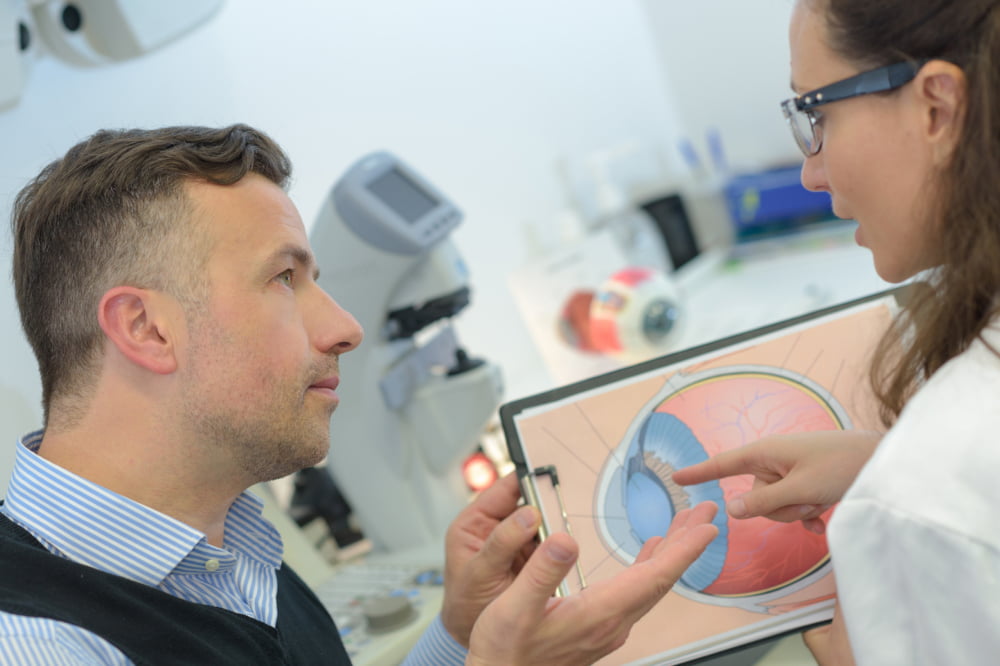
Different ways to manage macular degeneration
Macular degeneration is a severe eye condition affecting the central part of the retina, the macula. This can significantly impact one’s vision and quality of life. While it’s a concerning diagnosis, there are various remedies and treatments for macular degeneration available that can help manage the condition and potentially slow its progression. Read on to effectively navigate the challenges caused by this condition and learn about the latest treatment options.
Understanding macular degeneration
Macular degeneration is primarily prevalent among older adults and manifests in two main forms— dry macular degeneration and wet macular degeneration.
Age-related macular degeneration (AMD) is a common eye condition that affects the retina’s central portion, leading to vision loss in individuals over 50. The macula, a small region at the center of the retina, is pivotal for clear vision. It enables one to read, recognize faces, and perform tasks requiring detailed sight. Both forms of macular degeneration can disrupt these fundamental eye activities and impair these capabilities. Dry macular degeneration involves the thinning of the macula, leading to the gradual loss of central vision. Wet macular degeneration introduces abnormal blood vessels beneath the retina, potentially causing leakage, scarring, and severe central vision loss.
Breakthrough treatments for macular degeneration
Advancements in health-related science have resulted in exciting breakthroughs in treating macular degeneration. These innovations in treatment for age-related macular degeneration (AMD) bring renewed hope and improved outcomes. Let’s delve into some of the macular degeneration treatments that are making a significant impact:
- Anti-VEGF
One of the remarkable breakthroughs in treating wet macular degeneration is the use of anti-VEGF (vascular endothelial growth factor) prescriptions. They help reduce abnormal blood vessel growth, leakage, and retinal damage. They play a vital role in preventing further vision loss and may even improve sight in some cases. - Gene therapies
Cutting-edge gene therapies aim to target the underlying genetic factors contributing to macular degeneration. By addressing these genetic triggers, researchers are exploring ways to slow down or even halt the progression of the condition, offering new hope for individuals with AMD. However, this treatment may not suit many individuals with the condition. - Implantable miniature telescopes
Implantable miniature telescopes are a revolutionary solution for those with advanced AMD and significant central vision loss in both eyes. These devices are surgically implanted into one eye, magnifying the images and projecting them onto the healthier areas of the retina. - Stem cell therapies
Stem cell research shows promising potential for regenerating damaged retinal cells in individuals with macular degeneration. Although it is still in the experimental stage and research is underway, this is a promising avenue for treating macular degeneration.
Treatment for age-related macular degeneration
- Photodynamic therapy (PDT)
It involves using a light-sensitive prescription intravenously into the bloodstream, which is further activated by shining a laser light on the affected area of the retina. This activates the solution to target and destroy abnormal blood vessels. - Laser therapy
Also known as laser photocoagulation, laser therapy is used to treat both wet and dry AMD. In this procedure, a laser beam is used to seal leaking blood vessels in wet AMD or to destroy abnormal blood vessel growth. Laser therapy can help prevent further damage to the retina, although it may not restore lost vision. - Intraocular implants
In advanced AMD cases with significant vision loss, intraocular implants can be considered. These devices, such as telescopic lenses or miniature telescopes, are surgically implanted in the eye to magnify images and improve central vision. While they do not restore normal vision, they can provide functional improvement in daily activities. - Nutritional supplements
High-dose formulations of antioxidants and vitamins, known as the AREDS (age-related eye disease study) supplements, have demonstrated the ability to slow down the progression of dry AMD. These supplements are especially beneficial for individuals at risk of developing advanced AMD. - Combination therapies
Emerging research suggests that combining different treatments may offer enhanced results. For example, a combination of anti-VEGF treatments and other modalities like gene therapies or stem cell treatments could potentially yield synergistic effects. These combination therapies aim to provide a comprehensive approach to managing macular degeneration.
As one navigates through the ever-evolving treatments for macular degeneration, it’s essential to remain informed, engaged, and proactive in managing the condition. It’s important to consult with a healthcare professional specializing in eye health to explore the most suitable treatment options based on individual needs and circumstances. Regularly keep in touch with a healthcare provider, explore innovative options, and make decisions that align with unique needs and goals. As research and innovation progress, individuals facing macular degeneration can look forward to a future where treatments for macular degeneration not only preserve the vision but also improve it.




